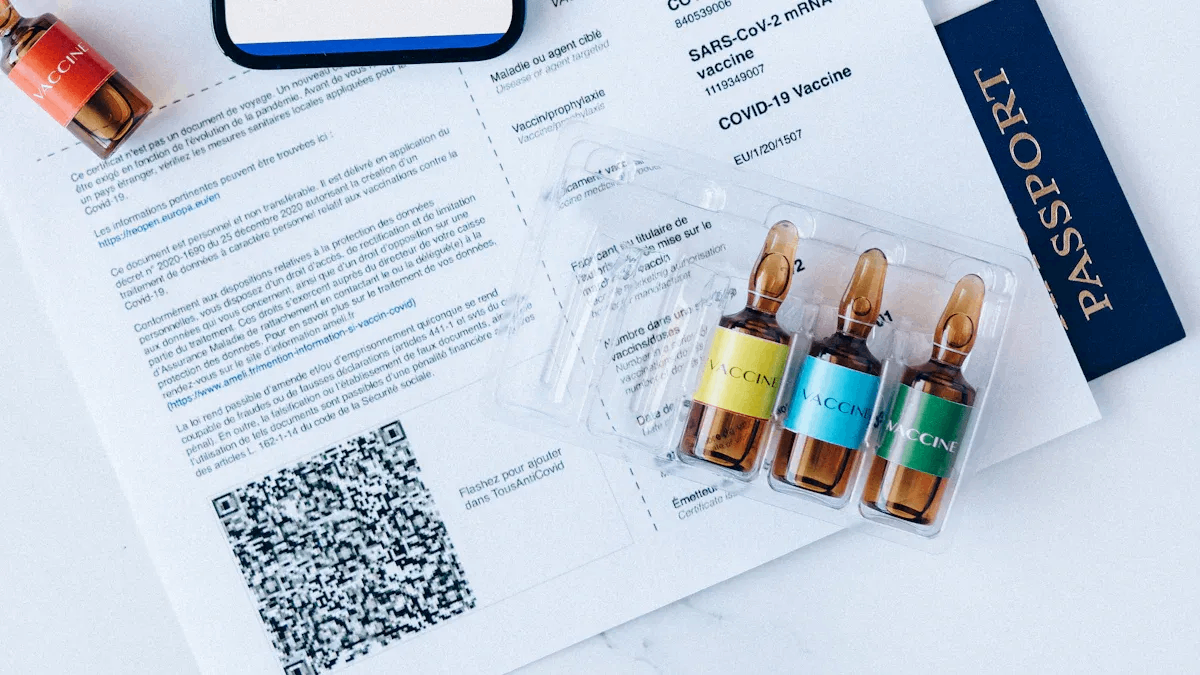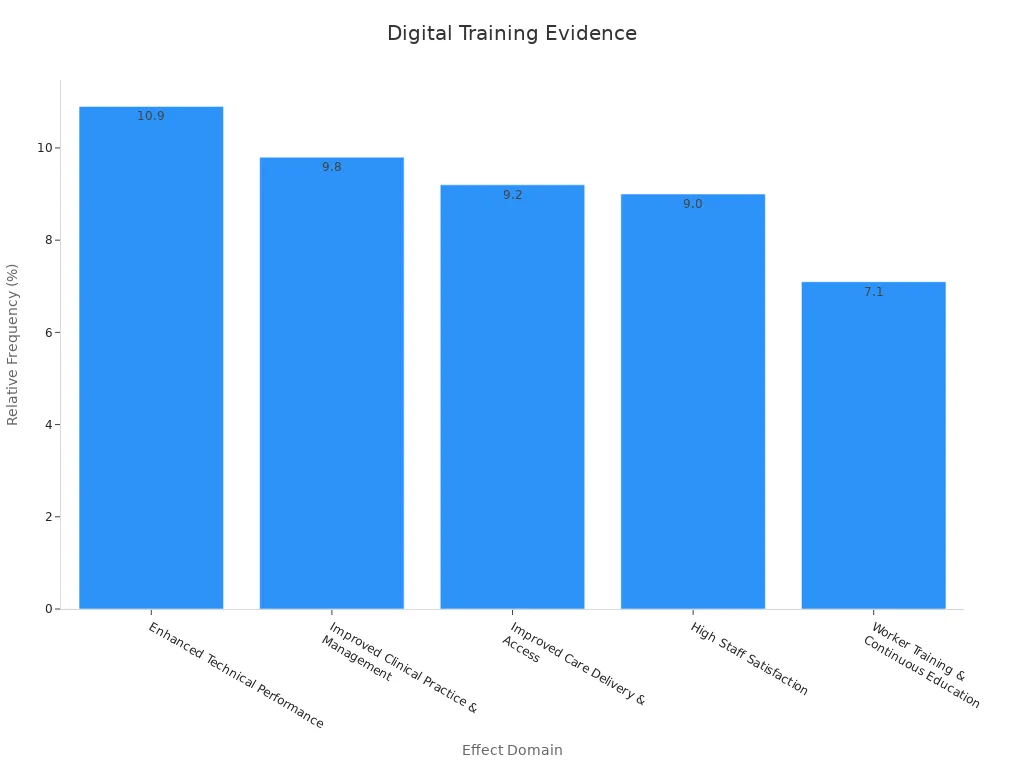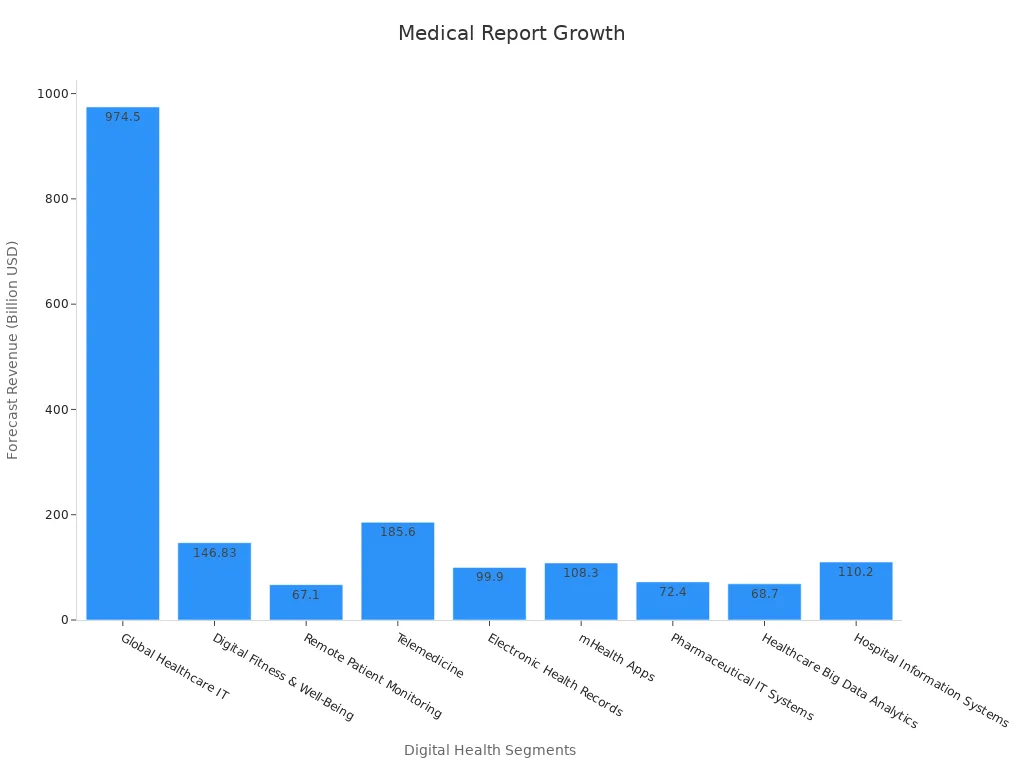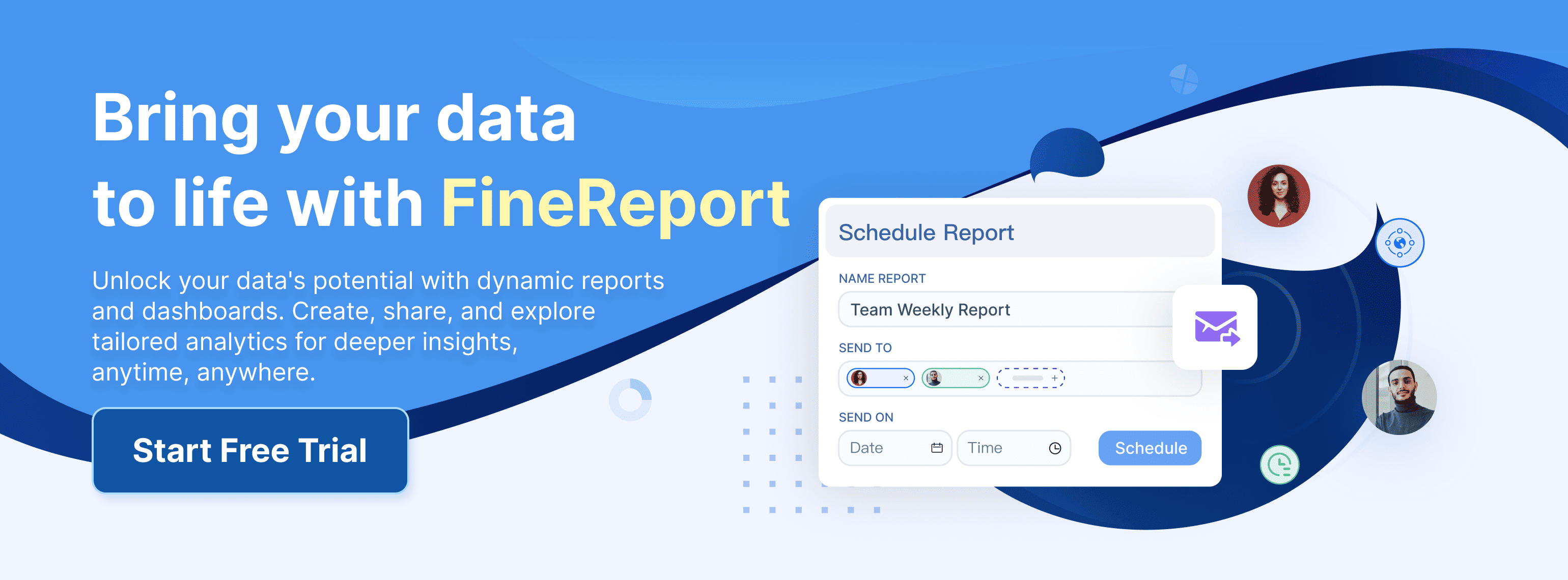Digital transformation is rapidly reshaping healthcare delivery, driving a new era in medical report management. Healthcare faces mounting pressure from increasing patient demands and regulatory changes, pushing organizations toward innovative digital tools and integrated platforms like FanRuan’s FineReport. The healthcare IT market is projected to surpass $730 billion by 2029, reflecting the scale of this transformation:
| Metric / Indicator | Statistic / Figure | Year / Period |
|---|---|---|
| Digital transformation market size | $0.55 trillion projected to $1.38 trillion | 2024 to 2029 |
| Healthcare IT market expansion | $360 billion to over $730 billion | 2024 to 2029 |
| AI medical note-taking investment | $390 million to $800 million | 2023 to 2024 |
| EHR adoption satisfaction | 81% of primary care physicians prefer EHRs | Survey |
This transformation empowers healthcare professionals to improve accuracy, efficiency, and patient care. As more than 337,000 digital health apps and hundreds of AI-powered diagnostics emerge, the industry embraces digital transformation to deliver better outcomes and future-ready healthcare.
Satus Quo of Medical Report
Digital Transformation in Healthcare
Healthcare systems worldwide face mounting pressure from demographic shifts, rising costs, and evolving patient expectations. The demand for digital healthcare transformation grows as populations age and chronic illnesses increase. Healthcare delivery must adapt to serve more patients with fewer resources. A recent survey shows that over 90% of healthcare organizations have adopted digital health tools, with 81% integrating these solutions into their Electronic Health Record (EHR) workflows. This widespread adoption signals a major shift from traditional paper-based processes to digital systems.
The COVID-19 pandemic accelerated this transformation, pushing healthcare systems to embrace telehealth, digital health apps, and real-time data management. Patients now expect online access to their medical report and health information. More than 70% of patients want digital access, and over half of millennials would switch providers for better online services. These trends highlight the urgency for healthcare systems to modernize their management practices.
| Driver | Numerical Evidence | Explanation |
|---|---|---|
| Demographic Shift | Increased life expectancy, declining birth rates | Fewer young people support a growing elderly population, stressing systems. |
| Cost Pressures | ~70% of budgets spent on staff pay | Labor costs and shortages drive need for digital transformation. |
| Patient Demand | >70% want online access; >50% millennials would switch | Patients expect digital healthcare services and better access. |
Challenges in Medical Report Management
Despite progress, healthcare management still faces significant hurdles. Clinicians spend over 40% of a 10-hour shift on data entry into electronic systems, often requiring thousands of clicks for routine tasks. Nurses and doctors devote about half their workday to screens instead of direct patient care. These challenges reveal the complexity of digital medical report workflows.
- Over 400 quality measures exist, making management and compliance difficult.
- Uptake rates for recommended screenings remain below 50% in many primary care settings.
- Family physicians manage nearly 500 different diagnoses, adding to reporting complexity.
- Maintaining certification for patient-centered care can cost $120,000 per physician each year.
- Industrial quality targets like Six Sigma are nearly impossible to achieve in primary care.
Healthcare systems must balance the benefits of digital transformation with the realities of daily management. The shift to digital health tools improves access and efficiency but also introduces new challenges in usability and workflow integration. Effective medical report management remains central to delivering high-quality healthcare.
Digital Solutions for Medical Report

Health Record Management Tools
Healthcare organizations now rely on a range of digital health tools to streamline health record management. Electronic health records have become the foundation of efficient health record management in modern healthcare systems. These platforms store, organize, and retrieve patient information quickly, supporting clinical decisions and reducing administrative burdens. Hospitals that use electronic health records report significant reductions in documentation time and medication errors. A meta-analysis of 47 studies found that electronic health records led to higher adherence to clinical guidelines and fewer adverse drug events. Health Information Exchange systems also play a vital role, with 94% of studies showing positive impacts on quality of care and 79% reporting cost-effectiveness improvements.
- Hospitals using electronic health records experience:
- Reduced documentation time for clinicians
- Fewer medication errors and adverse drug events
- Higher compliance with clinical guidelines
- Increased quality of care and cost savings
Despite these benefits, some healthcare systems still struggle with low adoption rates. In some regions, records remain stored both manually and electronically. However, staff often recognize the administrative effectiveness of electronic records, noting faster hospital operations and shorter patient wait times. These positive perceptions highlight the potential for improved implementation and policy support.
Digital health platforms now extend beyond electronic health records. They include AI-powered analytics, mobile apps, and wearable devices. These tools enable real-time patient data collection and support automated workflows. Predictive models analyze patient demographics and medical history to identify high-risk individuals, allowing for targeted interventions and reduced readmission rates. Real-time monitoring through wearables helps clinicians adjust treatments quickly, reducing emergency visits and improving outcomes.
FineReport for Medical Report
FanRuan’s FineReport stands out as a comprehensive solution for efficient health record management in healthcare transformation. FineReport enables seamless integration of data from multiple sources, supporting unified health record management across departments. Its intuitive drag-and-drop interface allows healthcare professionals to create dynamic reports and dashboards without extensive training. FineReport connects to a wide range of databases and file formats, making it easy to consolidate clinical, financial, and operational data.
Healthcare organizations use FineReport to automate report generation, schedule regular updates, and distribute information to stakeholders. The platform’s decision-making portal centralizes all reports and dashboards, providing secure access and robust permission controls. FineReport supports real-time patient data visualization, enabling clinicians and administrators to monitor key performance indicators such as patient satisfaction, bed occupancy, and resource allocation.
FineReport’s mobile dashboards empower healthcare teams to access critical insights on any device. Hospital managers track operational efficiency, monitor inventory, and receive alerts for anomalies in real time. Quality analysis modules use dynamic risk monitoring and early warning systems to enhance patient safety and care standards.
Examples of FineReport in action:
- Hospital management teams use FineReport to analyze revenue categories, medicine costs, and discharge diagnoses.
- Financial departments track budget versus actual spending and optimize staffing costs.
- Medical quality teams monitor clinical risks and receive early warnings for potential issues.
- Pharmaceutical retailers leverage FineReport’s mobile dashboards to manage inventory, monitor product performance, and ensure compliance.
A comparison of digital solutions and legacy systems highlights the advantages of platforms like FineReport:
| Metric | Legacy Systems (Lockbox) | Digital Solutions (FineReport, Payment Portals) |
|---|---|---|
| Transaction Speed | 1-3 business days | Often within hours or minutes (3x faster) |
| Funds Availability | 2-3 days | Same-day or next-day |
| Error Rate | 2-5% (manual errors) | Below 0.5% (automated validation) |
| Manual Reconciliation Time | Baseline | Reduced by 62% |
| Dispute Resolution Time | ~5 days | Less than 24 hours |
| Reporting | Delayed, basic | Real-time analytics, advanced reporting |
| Cash Flow Impact | Payment float reduced by 1-3 days | 43% faster payment receipt, 5.2 fewer days in AR aging |
| Working Capital Impact | N/A | Frees up $850,000+ annually for $5M monthly receivables |
| Fraud Risk Reduction | N/A | Up to 70% reduction (encryption, multi-factor auth) |
This table shows that digital health solutions like FineReport deliver faster, more accurate, and more secure management of healthcare data and transactions.
Data Integration and Real-Time Medical Report
Efficient health record management depends on robust data integration and real-time reporting. FineReport, together with FineDataLink, addresses these needs by synchronizing data across multiple systems with minimal latency. Extract Transform Load (ETL) processes support large-scale data cleansing and aggregation, ensuring accurate patient data integration. Enterprise Information Integration provides on-demand access to real-time data from diverse sources, enabling immediate analysis and reporting.
- Real-time monitoring of patient vitals through wearable devices allows clinicians to make timely treatment adjustments.
- Predictive analytics identify high-risk patients, enabling targeted interventions that reduce readmission rates and costs.
- Data visualization dashboards present integrated data clearly, supporting quick clinical decisions and improving patient outcomes.
- Resource allocation analytics optimize the use of personnel, beds, and equipment, enhancing efficiency and care delivery.
FanRuan’s FineReport empowers healthcare systems to map patient journeys, identify workflow inefficiencies, and improve satisfaction. Early warning systems use predictive analytics to detect conditions such as sepsis, allowing for timely interventions that lower mortality rates. Integrating electronic health records with wearable devices enables continuous, actionable insights for clinicians, supporting proactive care and better outcomes.
Healthcare organizations that adopt real-time reporting and data integration experience measurable improvements. For example, HealthBridge Solutions achieved a 50% reduction in wait times and a 45% increase in clinical efficiency after implementing integrated EHR, AI analytics, and real-time resource tracking. Nexus Health Group saw a 40% reduction in administrative tasks and a 45% increase in patient portal use with digital health platforms and predictive modeling.
| Organization | Digital Tools Implemented | Key Metrics / Results | Summary of Effectiveness |
|---|---|---|---|
| HealthBridge Solutions | Integrated EHR, AI analytics, patient mobile app, real-time resource tracking | 50% reduction in wait times; 45% increase in clinical efficiency; 30% increase in patient engagement | Improved care coordination, reduced errors, enhanced patient satisfaction |
| Nexus Health Group | Digital health platform, AI predictive modeling, patient portals, wearables | 30% reduction in wait times; 40% reduction in admin tasks; 45% increase in portal use; 25% improvement in preventive care | Enhanced patient engagement and tailored care delivery |
| LifeCare Medical Centers | EHR with decision-support, RFID for medication management | 40% improvement in clinical efficiency; 25% reduction in medical errors; 15% reduction in wait times | Improved patient safety, clinical workflow, and medication accuracy |
| OmniHealth Providers | Telehealth system, cloud-based records, AI diagnostics | 50% increase in healthcare access; 35% increase in patient engagement | Expanded healthcare access and improved service quality for underserved populations |
Digital healthcare transformation relies on continuous health data generation, automated workflows, and seamless integration. and FineDataLink provide the foundation for efficient health record management, supporting healthcare transformation and delivering measurable improvements in patient care, operational efficiency, and data-driven decision-making.
Benefits of Digital Transformation in Medical Report

Improved Accuracy and Efficiency for Medical Report
Digital transformation brings measurable improvements to healthcare by increasing accuracy and efficiency in medical report management. Hospitals that implement digital health record tools see a clear rise in data accuracy. For example, after correcting errors in electronic health records, one study found a 6 percentage point increase in the validity of patient data. Digital solutions also outperform manual methods in both speed and precision. Automated systems process reports in about two hours, while manual reviews take much longer and are more prone to errors.
Peer-reviewed research shows that digital report systems integrated with AI and machine learning improve hospital delivery times and support predictive analytics for patient admissions. These advances help optimize staff scheduling and resource allocation, leading to better patient outcomes.
Healthcare organizations using digital tools experience:
- Reduced manual errors and faster report generation
- Enhanced efficient health record management
- Improved effectiveness in clinical workflows
A comparative analysis highlights these gains:
| Metric | Digital Method Performance | Manual Review Comparison |
|---|---|---|
| Overall Accuracy | 0.934 (95% CI: 0.928–0.939) | Lower, more variable |
| Execution Time | ~2 hours | Significantly longer |
| Specificity | High | Lower, especially for complex tasks |
Enhanced Patient Engagement by Medical Report
Digital medical report systems transform patient engagement in healthcare. Patients who access their health information online become more involved in their care. Hospitals using digital engagement tools report up to a 25% reduction in 30-day readmission rates. Patients who receive timely education and follow-up after discharge are less likely to return to the hospital.
- Digital outreach and data collection save labor costs and enable targeted interventions.
- Automated systems identify patient barriers, such as transportation or food insecurity, and connect patients to needed services.
- These strategies align with value-based healthcare, rewarding quality outcomes and patient satisfaction.
Patients benefit from shorter hospital stays, increased trust, and better health equity. Digital platforms also help healthcare providers avoid negative revenue impacts by improving patient engagement and supporting value-based healthcare models.
Data-Driven Healthcare Decisions by Medical Report
Data-driven healthcare decisions lead to better patient outcomes and more effective care delivery. Predictive analytics in healthcare is a rapidly growing field, with global revenues expected to reach $22 billion by 2026. AI-powered tools now surpass radiologists in identifying false positives in mammograms, improving diagnostic accuracy and patient safety.
- Predictive analytics help identify effective treatments and estimate disease risk.
- Digital tools automate appointment scheduling and staffing, increasing operational efficiency.
- Integration of consumer health data with electronic health records empowers patients to manage their health risks.
Healthcare organizations that use data-driven metrics achieve higher growth rates and are more likely to reach strategic goals. These advances support efficient health record management and drive value-based healthcare by focusing on quality outcomes and patient-centered care.
Overcoming Barriers in Healthcare and Medical Report
Integration and Security of Medical Report
Healthcare organizations often face challenges with system integration and data security when adopting digital solutions for medical report management. Many hospitals use multiple platforms, which can lead to poor coordination and lack of interoperability. These issues slow down workflows and increase the risk of errors. Automation tools, such as digital patient intake forms and appointment scheduling, help reduce errors and save time. Telemedicine platforms allow patients to complete consent and payment steps before visits, which cuts administrative workload and speeds up report processing.
Security remains a top priority in healthcare management. Protecting patient data requires strong encryption, multi-factor authentication, and strict access controls. FineReport supports secure data management by offering robust permission settings and centralized user management. This approach ensures only authorized staff can access sensitive information. By simplifying workflows and improving integration, healthcare organizations can reduce turnaround times and deliver reports more efficiently.
Tip: Involve all stakeholders early in the integration process. Standardize workflows and provide continuous technical support to ensure smooth adoption and improved efficiency.
Training and Adoption of Medical Report
Successful digital transformation in healthcare depends on effective staff training and adoption. Many professionals report challenges with new technologies, such as inadequate training and technical issues. A recent survey found that 63% of healthcare workers experienced training gaps, while 52% faced software bugs. Despite these hurdles, organizations that invest in thorough training see clear benefits, including improved care delivery and higher staff satisfaction.
The following table highlights the impact of digital training on healthcare staff:
| Effect Domain | Relative Frequency of Occurrence (RFO) | Confidence Level |
|---|---|---|
| Enhanced Technical Performance | 10.9% (95% CI 5.3–22.5) | Moderate confidence |
| Improved Clinical Practice & Management | 9.8% (95% CI 3.9–24.2) | Moderate confidence |
| Improved Care Delivery & Access | 9.2% (95% CI 4.1–20.9) | Moderate confidence |
| High Staff Satisfaction | 9.0% (95% CI 4.2–19.4) | Low confidence |
| Worker Training & Continuous Education | 7.1% (95% CI 3.8–13.4) | Moderate confidence |

FineReport’s user-friendly design and intuitive drag-and-drop interface help reduce learning barriers. Healthcare teams can quickly adapt to new reporting systems, improving productivity and documentation quality. Continuous education and technical support further boost staff confidence and comfort with digital tools. By prioritizing training and support, healthcare organizations can achieve smoother adoption and maximize the benefits of digital management solutions.
Future of Medical Report Management
Innovations in Digital Healthcare
Healthcare continues to evolve rapidly, driven by breakthroughs in artificial intelligence, real-time analytics, and mobile health technologies. The integration of AI into clinical workflows now enables faster diagnostics, predictive insights, and automation of routine documentation. By 2027, AI is projected to reduce clinical documentation time by 50%, allowing clinicians to focus more on patient care. Hospitals increasingly rely on electronic health records and mobile health apps to streamline health record management and improve patient engagement. Surveys show that 92% of healthcare leaders view generative AI as a promising tool for efficiency, while 96% believe it can enhance patient outcomes.
The digital health market is expected to grow at a compound annual rate of 19.7% through 2032, fueled by rising adoption of data-driven solutions, expansion of telemedicine, and increased use of wearable devices for remote patient monitoring.

Strategic investments and collaborations continue to accelerate digital healthcare transformation. In 2024, global funding for digital health reached $25.1 billion, with the United States and Europe leading innovation. AI-powered healthtech, scalable health management solutions, and advanced diagnostics now attract the largest investments, reflecting a strong market preference for proven, scalable platforms.
Trends in Health Record Management
Health record management is shifting from manual, fragmented processes to automated, integrated systems. By 2035, nearly all health systems are expected to use electronic health records and metadata tools for management, compared to traditional time-motion studies. This transition enables more precise, data-driven decisions and improves workforce efficiency.
| Segment | Forecast Revenue (2027) | Key Growth Drivers |
|---|---|---|
| Global Healthcare IT | $974.5 billion | AI, cloud computing, EHRs, telemedicine, big data |
| Electronic Health Records | $99.9 billion | Cloud-based records, data integration platforms |
| mHealth Apps | $108.3 billion | Health tracking apps, patient engagement tools |
| Healthcare Big Data Analytics | $68.7 billion | Predictive analytics, population health management |
Healthcare transformation will continue as providers invest in technology. According to recent reports, 80% of healthcare organizations plan to increase spending on digital solutions over the next five years. Telehealth services are projected to stabilize at higher levels, with 20–30% of care delivered virtually. AI and machine learning will automate up to 30% of employee hours by 2030, transforming workflows and reducing clinician burnout.
FanRuan envisions a future where digital health platforms like FineReport and FineDataLink empower healthcare organizations to unify data, enable real-time reporting, and support predictive analytics. These innovations will help break down silos, optimize resource allocation, and deliver patient-centered care. As digital healthcare transformation accelerates, FanRuan remains committed to driving ongoing healthcare transformation and digital innovation worldwide.
Digital solutions like FanRuan’s FineReport have transformed healthcare by streamlining medical report management and improving healthcare delivery. Organizations now track progress using key performance indicators such as patient satisfaction, system integration, and data analysis. These metrics help optimize resources and support data-driven decisions. Notable improvements include reduced hospital complications, lower readmission risks, and better clinical outcomes across patient groups.

Healthcare leaders prioritize quality, safety, and patient experience as top goals. Overcoming barriers like system integration and staff training remains essential. By embracing digital transformation, healthcare organizations position themselves for future-ready, patient-centered care and ongoing innovation
Continue Reading about Medical Report
FAQ

The Author
Lewis
Senior Data Analyst at FanRuan
Related Articles

12 Best Data Observability Tools to Watch in 2025
Top 12 best data observability tools for 2025 with key features to boost data quality, reliability, and integration for modern data-driven teams.
Howard
Nov 28, 2025

Top 10 Data Quality Monitoring Tools You Should Know in 2025
Compare the top 10 data quality monitoring tools for 2025 to find solutions with advanced features, real-time monitoring, and seamless integration.
Howard
Nov 27, 2025

Top 10 Vendors Leading Modern Data Platforms in 2025
See the top 10 vendors shaping modern data platform solutions in 2025, with insights on innovation, scalability, integration, and enterprise adoption.
Lewis
Nov 27, 2025




